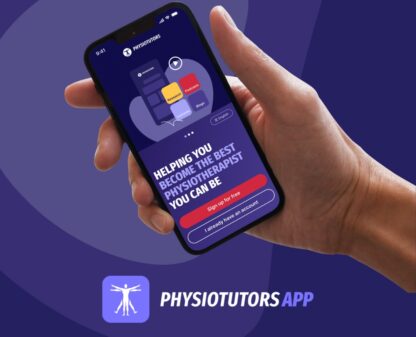Cervicogenic Headache

Body Chart

Generally, it may appear on any area of the head
Frequent: frontal, retro-orbital, occipital, temporal
Background Information
Patient Profile
- Female > Male
- All ages
- 15-20% of all relapsing headaches are cervicogenic
Pathophysiology
Trigger
- Stress
- Sustained postures (sleeping, sitting activity)
- Movements into painful direction: e.g. rotation-extension
Cause
- Cervical dysfunction
- Convergence of N. Trigeminus and spinal nerves of upper cervical spine segments. Irritation of structures innervated by the first three cervical spinal nerves (muscles, discus, vertebral arteries, internal carotid artery, facets)
- Exact identification of the affected structure causing the headache is not possible due to the close proximity of the trigeminal nerves
- Contributing factors can play a major role in the etiology: Disturbed sleep, stress, psychological factors, diet, allergies, etc.
Pain Mechanisms
- Mechanical nociceptive: Movement dependent, direction specific, on/off characteristic
- Ischemic nociceptive: Pain elicited during prolonged static postures
- Maladaptive central sensitization: Contributing factors influence pain perception
- Motor output: Change in muscle tone and movement
Course
Headache onset is preceded by neck pain. Duration of painful period varies from hours to days. Improvement of symptoms within 3 months after end of treatment. Moderate to good effectiveness
History & Physical Examination
History
History varies (usually long), head/C-spine trauma (WAD, fall) in history4, neck pain preceding headache, patient describes postural load during ADLs but often fails to describe a specific trigger (<50%), other concordant headache types, pain got progressively worse + other (migraine-like) symptoms
- Unilateral/bilateral with a dominant side: pain does not switch sides
- Gnawing, pulsating, throbbing
- Narrow band around head
- Limited ROM in C-Spine: especially high cervical rotation
- Radiating pain: referred pain
- Not sharp shooting
- Moderate to severe
- Starts in the neck
- May have migraine like symptoms: nausea, photophobia, dizziness, etc.
Physical Examination
Inspection
Cranio-cervical angle (line of spinous process C7 to tragus of the ear) is <51° (normal): Ø 44.5% in symptomatic population (± 2.3 SD)
Active Examination
Assess movement both qualitatively and quantitatively
Functional Assessment
Patient is able to demonstrate provoking movements
Special Testing
Neurological
no abnormal findings
Passive Examination
PPIVMs & PPAVMs C0-C2: local stiffness in rotation/extension centrally and laterally; possible protective muscle spasm down to CTJ
Further Testing
CCFT, Eye-Head Coordination
Differential Diagnosis
- Tension-type headache
- Migraine
- Meningitis
- Cranial arteritis
- Subarachnoid hemorrhage
- Tumor
- Fracture
Treatment
Strategy
Start with patient education. Manual interventions at the C-Spine, training motor control, stretching and strengthening of cervical muscles, as well as eliminating contributing factors.Goal: Pain reduction, improve function, adapt ADLs, and elimination of possible contributing factors
Interventions
Patient has to understand trigger and source of pain to understand their situation and treatment strategy
Reduction of contributing factors: Lifestyle modifications
Stress: Relaxation exercises, endurance training 3-4x/week as part of a hobby
Sleep: Monitor sleeping cycles and adapt: sufficient hours, regular pattern
Work ergonomics: Adapt working place and daily tasks
Diet: Consult with dietician to adapt eating habits
Mobilization / Manipulation of C/T-Spine
Deep neck flexor exercises, general strengthening upper quarter, stretching
Headache diary: Get individual insight into correlation between headache and specific activities
References
- Antonaci, F., Bono, G., & Chimento, P. (2006). Diagnosing cervicogenic headache. J Headache Pain, 7(3), 145-148. doi:10.1007/s10194-006- 0277-3
- Bogduk, N. (2001). Cervicogenic headache: anatomic basis and pathophysiologic mechanisms. Curr Pain Headache Rep, 5(4), 382-386.
- Fredriksen, T. A., Antonaci, F., & Sjaastad, O. (2015). Cervicogenic headache: too important to be left un-diagnosed. J Headache Pain, 16(1), 6. doi:10.1186/1129-2377-16- 6
- Frese, A., Schilgen, M., Husstedt, I. W., & Evers, S. (2003). [Pathophysiology and clinical manifestation of cervicogenic headache]. Schmerz, 17(2), 125-130. doi:10.1007/s00482-002- 0194-6
- Piekarz, H. v. (2011). Zervikogener Kopfschmerz. In P. Westerhuis, R. Wiesner (Eds.), Klinische Muster in der Manuellen Medizin (Vol. 2, pp. 269-279). Stuttgard: Thieme Verlag.
- Sargent, J. D., Baumel, B., Peters, K., Diamond, S., Saper, J. R., Eisner, L. S.; Solbach, P. (1988). Aborting a migraine attack: naproxen sodium v ergotamine plus caffeine. Headache, 28(4), 263-266.Stovner, L. J., Zwart, J. A., Hagen, K., Terwindt, G. M., & Pascual, J. (2006). Epidemiology of headache in Europe. Eur J Neurol, 13(4), 333-345. doi:10.1111/j.1468-1331.2006.01184.x


